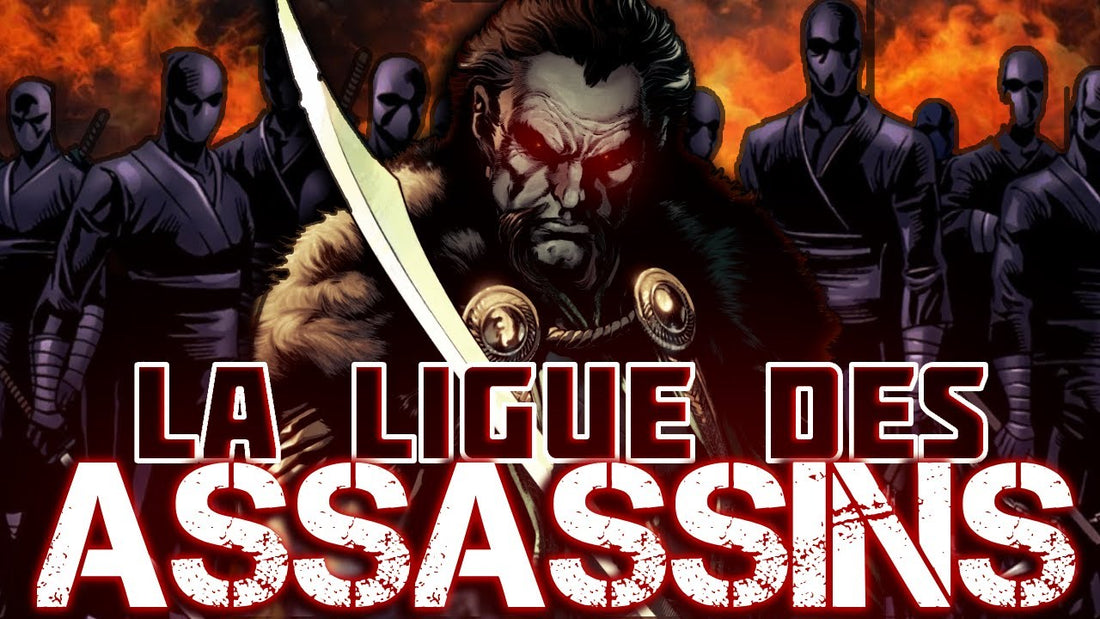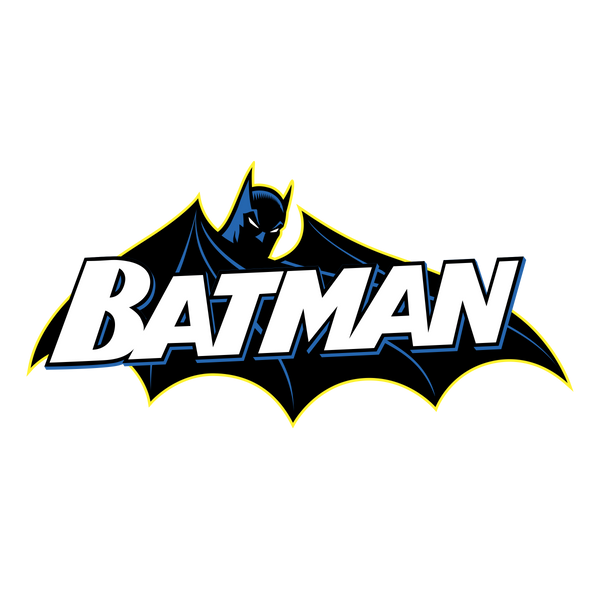
Batman and the League of Assassins
A Dark Alliance: Batman vs. the League of Assassins
Since his debut, Batman has faced Gotham's diverse and formidable criminals. But beyond the dark alleys of his city, he's also faced an older, more mystical, and more ruthless threat: the League of Assassins. Founded centuries ago and led by Ra's al Ghul, this secret organization represents one of the greatest threats in the DC Universe.
This first part explores the origins of this demonic brotherhood, its goals, and its unique connection to Batman, the only hero Ra's envisioned as his successor.
Who are the League of Assassins really?
Sometimes called the "League of Shadows" depending on the adaptation, the League of Assassins is a millennia-old organization founded by Ra's al Ghul . Their goal: to restore balance to the world by eliminating those who threaten harmony. The means are irrelevant. For them, murder is a legitimate weapon if it purges society of its worst elements.
The League operates in the shadows, with ruthless discipline. Its members are trained in combat, infiltration, torture, and are often fanatical. They answer exclusively to their leader, Ra's al Ghul, a cultured man, immortal thanks to his Lazarus Pits, but ready to raze an entire city to save the planet.
Batman and Ra's al Ghul: respect and opposition
The bond between Batman and Ra's al Ghul is complex. Ra's sees Bruce Wayne as an equal. An ideal successor. An heir. He even calls him "detective" with a kind of aristocratic respect. For his part, Batman is arguably the one adversary Ra's seeks not simply to eliminate, but to rally.
Yet everything sets them apart. Batman refuses to kill. Ra's al Ghul uses only death as a solution. Their confrontation is moral, philosophical, almost biblical. And at the heart of this tension stands an unexpected figure: Talia al Ghul , daughter of Ra's, and (sometimes) lover of Bruce Wayne. Their son, Damian Wayne , will become a formidable Robin , raised according to the doctrines of the League.
Want to explore this mystical and brutal branch of the Batman universe? Dive into our Bat-Family page.
The Role of Ra's al Ghul and the Motives of the League
As leader of the League of Assassins, Ra's al Ghul embodies a complex figure, blending lofty ideals with extreme methods. His goal? To restore balance to the world by eradicating corruption, even if it means resorting to radical means. He believes Gotham is irredeemably rotten, and sees Batman as both an obstacle... and a potential heir.
An idealist turned extremist
Ra's al Ghul is no mere supervillain. He's a visionary, convinced that humanity is doomed by its excesses. He founded the League to intervene where governments fail. But his actions—often violent and devastating—place him at odds with Batman's justice, which is based on protecting every life.
Their confrontation therefore goes beyond a mere physical fight: it is a philosophical opposition between justice and sacrifice, redemption and purging. In many iterations, Ra's even offers Bruce Wayne to take over as the League's new leader. An offer Batman refuses each time, refusing to give in to the temptation of absolute power.
A lasting influence on Batman
The League of Assassins doesn't just make Ra's al Ghul a personal enemy of Batman. It challenges his moral foundations, pushes him to his limits, and sometimes upsets those around him, notably in the Batman: Birth of the Demon storyline and the Batman Begins series.
- In the comics : Ra's al Ghul first appeared in 1971's Batman #232 , written by Dennis O'Neil. He quickly became a recurring antagonist, but never a caricature.
- In Nolan's trilogy : played by Liam Neeson, he is Bruce Wayne's initial mentor before becoming his first major adversary in Batman Begins .
- In video games : notably Batman: Arkham City , where the League is at the heart of an epic story arc involving legacy, corruption and immortality.
If you want to explore the other iconic figures in the Batman universe, don't miss our complete guide to Batman's enemies .
Talia al Ghul: Love, Betrayal, and Legacy
It's impossible to talk about the League of Assassins without mentioning Talia al Ghul , daughter of Ra's and one of the most ambiguous characters in the Batman universe. By turns ally, lover, mother, and enemy, she embodies the complexity of the relationship between Bruce Wayne and the League. While Ra's al Ghul sees Batman as an heir, Talia also sees him as the father of her son: Damian Wayne.
Their relationship is one of contradictions. Talia admires Bruce's strength and morality, but remains loyal to her father's ideals. This makes her a tragic figure, caught between two worlds.
A key character in the Batman mythology
- Talia was introduced in 1971 in the comics, the same year as Ra's al Ghul, and her romantic connection to Bruce was quickly highlighted.
- She appears in numerous story arcs , including Batman: Son of the Demon , Batman Incorporated , and Death of the Family .
- In The Dark Knight Rises , she is portrayed by Marion Cotillard, who plays a manipulative version hiding under a false identity.
But beyond her role as a daughter or mother, Talia is a formidable strategist, leading the League in multiple continuities. She commands entire armies, devises complex plans, and represents a threat as formidable as it is emotional for Batman.
An endless ideological struggle: justice versus purification
What makes the relationship between Batman and the League of Assassins so compelling is the clash of two diametrically opposed philosophies. Batman believes in justice without murder, within the (sometimes flexible) confines of the law. The League, on the other hand, believes that the end justifies the means: killing to eradicate corruption, imposing order through fear. This divergence creates a constant conflict between Bruce Wayne and Ra's al Ghul, but also within himself.
Because sometimes, the League's vision seems effective. Gotham remains riddled with crime despite the Dark Knight's efforts. Isn't Ra's right? Isn't Talia a legitimate heir to this failing world? This moral dilemma runs through numerous animated series, films, and comics, and fuels the depth of the mythos.
This tension is also reflected in video games like the Batman: Arkham series, where the League operates in the shadows, and the player's decisions directly influence the balance between light and dark. This theme is also reflected in Grant Morrison's Batman and Robin storyline, where Damian, trained by the League, struggles with his murderous instincts while trying to become a worthy Robin.
Conclusion: A shadow war at the heart of the Batman universe
The League of Assassins embodies everything Batman rejects, while sometimes representing what he could become if he crossed the line. It's this duality that has fascinated fans for decades. By pitting his morality against the lethal effectiveness of Ra's and Talia, Bruce Wayne reveals the full complexity of his character. And this struggle between ideals only strengthens the universe of Gotham, between shadows and flames.
